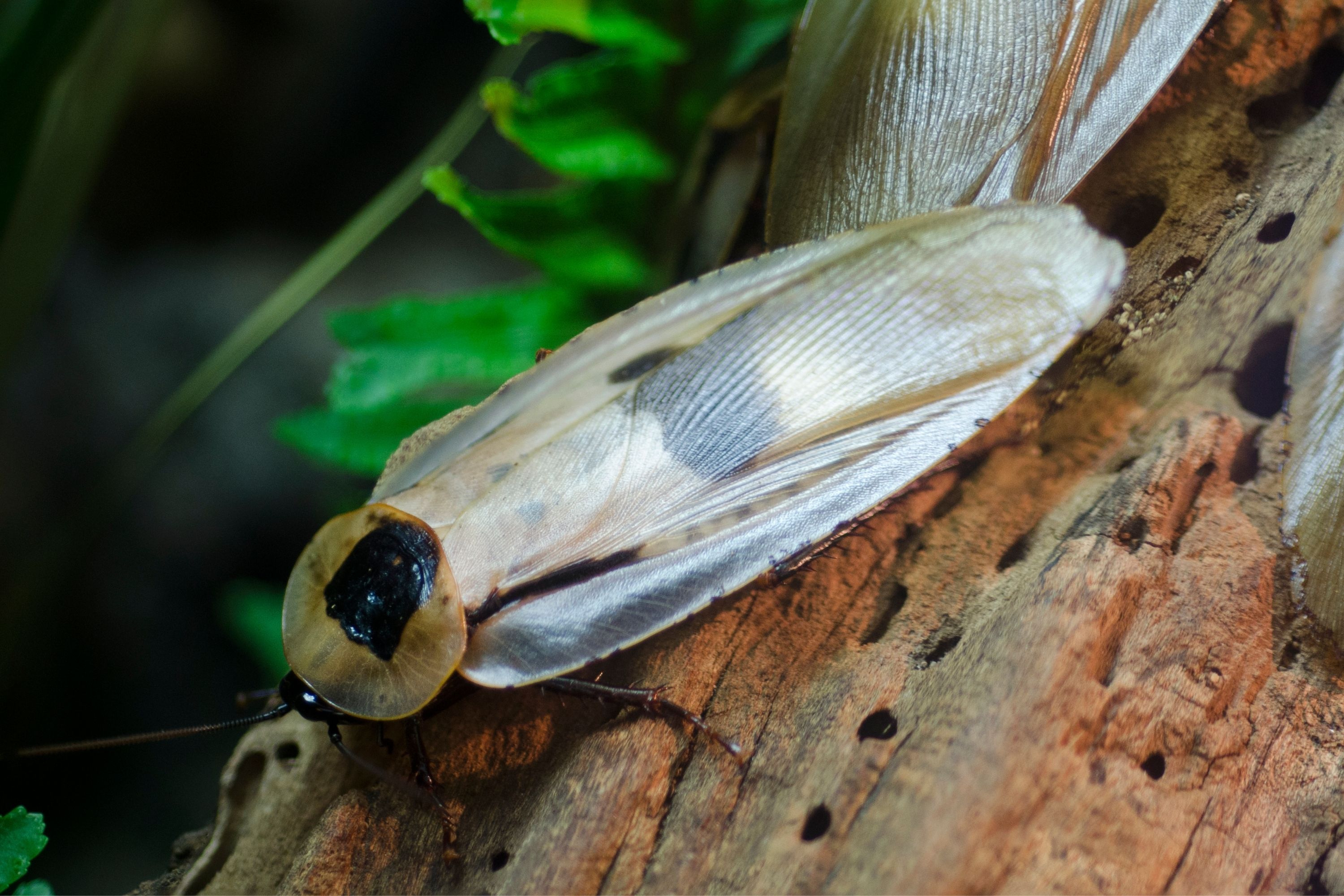Giant cave cockroach
(Blaberus giganteus)

Description
Blaberus giganteus, the Central American giant cave cockroach or Brazilian cockroach, is a cockroach belonging to the family Blaberidae. Blaberus giganteus is considered one of the largest cockroaches in the world, with males reaching lengths of up to 7.5 cm (3.0 in) and females 10 cm (3.9 in), although others list 9 cm (3.5 in) as the maximum length. These cockroaches are lightly built with flattened bodies, allowing them to hide in cracks from predators. Their bodies are brown with black markings. The wingspan of these insects is usually around 15 cm (6 in). Both males and females bear paired appendages (cerci) on the last abdominal segment, but only the males have a pair of tiny hair-like appendages called styli. Adults bear two pairs of wings folding back over the abdomen. The heavier females are less likely to fly. These cockroaches are closely related to the first winged insects that lived in the Carboniferous coal forests about 200 million years ago. This species is endemic to Central America and northern South America, and can be found in the rainforests, in Mexico, Guatemala, Panama, Colombia, Ecuador, Venezuela, Brazil, Trinidad and Tobago, Guyana, Suriname, and French Guiana. Habitat preferences include areas of high moisture and little light, such as caves, tree hollows, and cracks in rocks. Blaberus is a genus of cockroaches generally found in South America. About 19 species are in the genus, and they are popular among hobbyists as feed for other arthropods (Blaberus discoidalis in particular serves this function) or as pets. Unlike several genera of cockroaches considered to be pests, this genus keeps its ootheca in its abdomen until the time it hatches. They generally require a relative humidity of 60% or higher to thrive and temperatures above 25 °C (28-30 °C is best) to reproduce. As typical for all roaches, individuals undergo hemimetabolous metamorphosis, which means the change from juvenile to adult is gradual. The three distinct stages in their lifecycle are egg, nymph, and adult. Only adults are able to reproduce and have wings. Prolonged nymphal stages, along with additional molts, can sometimes occur in B. giganteus for a number of reasons. One hypothesis is that the absence jostling and mutual stimulation which are found often in colony life could slow the developmental process. In other instances, lower temperatures and reduced humidity can lead to delayed maturation and an increase in the number of molts.
Taxonomic tree:







